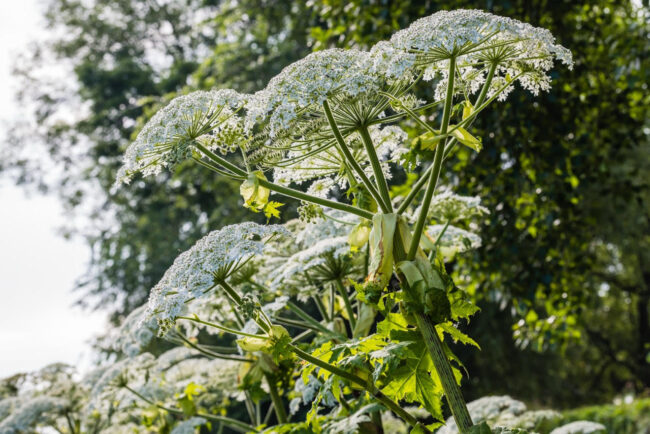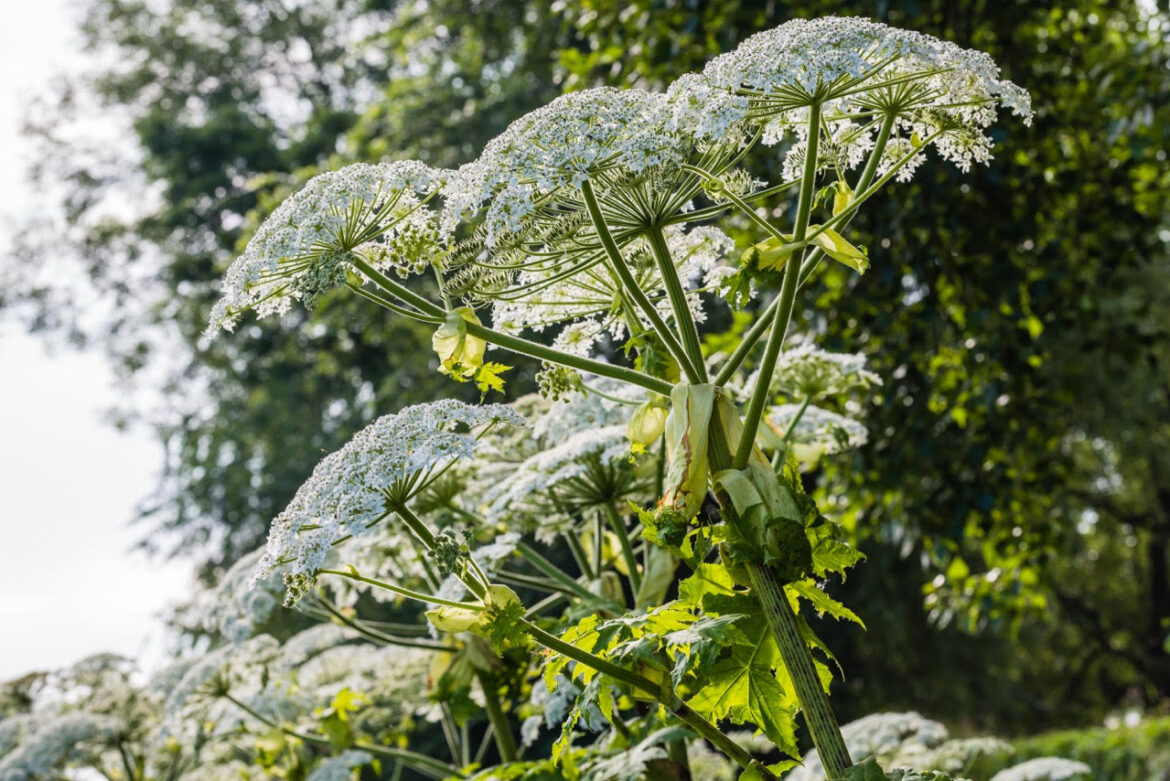
Closeup of white blooming Giant Hogweed or Heracleum mantegazzianum plants in their natural habitat.
Invasive species pose serious ecological and economic risks, and with global travel and trade at record highs and climate change rapidly altering habitats, the danger of new introductions and the spread of existing species continues to grow.
Both recreational and commercial human activity play a key role in the unintentional spread of invasive species.
Without intervention, consequences associated with INNS can be long-term and difficult to reverse.
A number of well-established invasive species are still impacting the Foyle and Carlingford catchments, including:
* Asian Clam: A freshwater species known for its rapid reproduction rates and its filter-feeding capacity, the Asian clam can outcompete native species such as the freshwater pearl mussel, which is already under significant pressure. Asian clam populations are currently expanding upstream from the River Foyle.
* Giant Hogweed: While visually striking, this plant poses a serious public health risk. Its sap can cause severe skin reactions when exposed to sunlight and contributes to riverbank erosion by displacing native plants.
* Himalayan Balsam: Its fast growth and prolific seed spread smother native flora and destabilise riverbanks, making erosion more likely and ecosystem restoration more difficult.
* Japanese Knotweed: Originally planted for ornamental purposes, this species now dominates many riparian zones, displacing native species and damaging both natural habitats and infrastructure.
* Pink Salmon: Also known as humpback salmon, pink salmon are a migratory species native to river systems in the northern Pacific Ocean. The species is now spreading across the North Atlantic originating from stocking programmes undertaken in Russia. This species has only been rarely encountered on the island of Ireland, but it poses a threat to already threatened native Atlantic salmon.
* Zebra Mussels: These small freshwater mussels can colonise rapidly, clogging infrastructure and competing with native bivalve species. Their filter-feeding can also significantly alter water quality and food web dynamics.
* Slipper Limpets: Slipper Limpets’ dense stacks can smother seabed habitats and displace native shellfish populations as they compete for food and space. Slipper limpets also have significant impacts on commercial shellfisheries.
Ciarán McGonigle, Joint Interim Designated Officer, said: “Our aquatic ecosystems are under constant pressure, and invasive species are one of the most serious threats they face.
“Due to the interconnectivity of our rivers and lakes on this island, once an invasive species takes hold, it can spread quickly and cause lasting damage, displacing native wildlife, altering habitats and upsetting the balance of the local ecosystems.
“These species don’t recognise borders, so it’s vital that we respond in kind. Collaborative, cross-border action involving government departments, agencies and stakeholders is essential to protecting the health and resilience of our shared aquatic environments.”
Loughs Agency continues to work with local authorities, environmental organisations and landowners to monitor and mitigate the impacts of INNS across the catchments.
As a North-South Implementation Body, the Agency also works closely with government partners across both jurisdictions to ensure coordinated responses to shared threats.
Loughs Agency is also a member of the Shared Island Project on Invasive Species, reflecting its commitment to collaborative, all-island action.
However, the Agency emphasises that prevention remains the most effective tool.
Professionals and stakeholders across all sectors are encouraged to report sightings, follow biosecurity best practices and support ongoing awareness efforts.
Further information on invasive species and how to report them is available at: https://www.loughs-agency.org/what-we-do/management/invasive-species
Tags:





